Special Report
Countries Taking in the Most Refugees and Where They Come From

Published:
Last Updated:

Persistent violent conflicts around the world and continuing population growth have contributed to an ongoing and ever-worsening global refugee crisis. As of the end of 2018, there were more than 74.8 million displaced people as counted by the United Nations High Commissioner for Refugees, the UN’s refugee agency. That is an increase of more than 74% since 2013 and the fifth straight year the UNCHR has recorded an increase.
According to the UNHCR, one person becomes displaced every two seconds somewhere in the world. While a large share of that group includes those who have been displaced from their homes but are still living somewhere in their country, over 25 million are refugees and asylum seekers outside their country — and must rely on the hospitality of governments and citizens in other nations to survive. Based on the UNCHR’s 2018 displaced population counts, 24/7 Wall St. reviewed the 25 countries that host the most displaced persons within their borders.
The largest source country of refugees is Syria, ravaged by civil war, with 13 million people forcibly displaced as of the end of 2018, or more than half of that nation’s population. In 2019, the U.S. military suddenly withdrew from its positions in northern Syria. This set in motion a Turkish military invasion of Kurdish territory and further destabilized the already war-torn region. In recent years, many of Syria’s displaced people have fled to Turkey as well as Lebanon. Thousands have also gone to Germany, where the total refugee population has soared more than fivefold since 2013.
In other parts of the world, developing nations with limited resources have become havens for refugees fleeing conflict. Uganda, one of the poorest countries on Earth, became home to more than 1 million refugees, many from South Sudan, which has been ravaged by civil war for years. These are the 25 poorest countries on Earth. Uganda has taken in the third most refugees of any country, according to UNHCR data, and its refugee population has soared over 400% since 2013.
Climate change is one possible explanation for the increase in refugees and other displaced populations in recent years. Water scarcity, drought, flooding, wildfires, and more — all conditions which have been shown to be increasing in intensity and frequency as a result of climate change — are displacing people directly and exacerbating poor conditions for those who are fleeing their homes. Here are some climate refugee crises happening right now (and how you can help.)
Click here to see the countries taking in the most refugees and where they came from
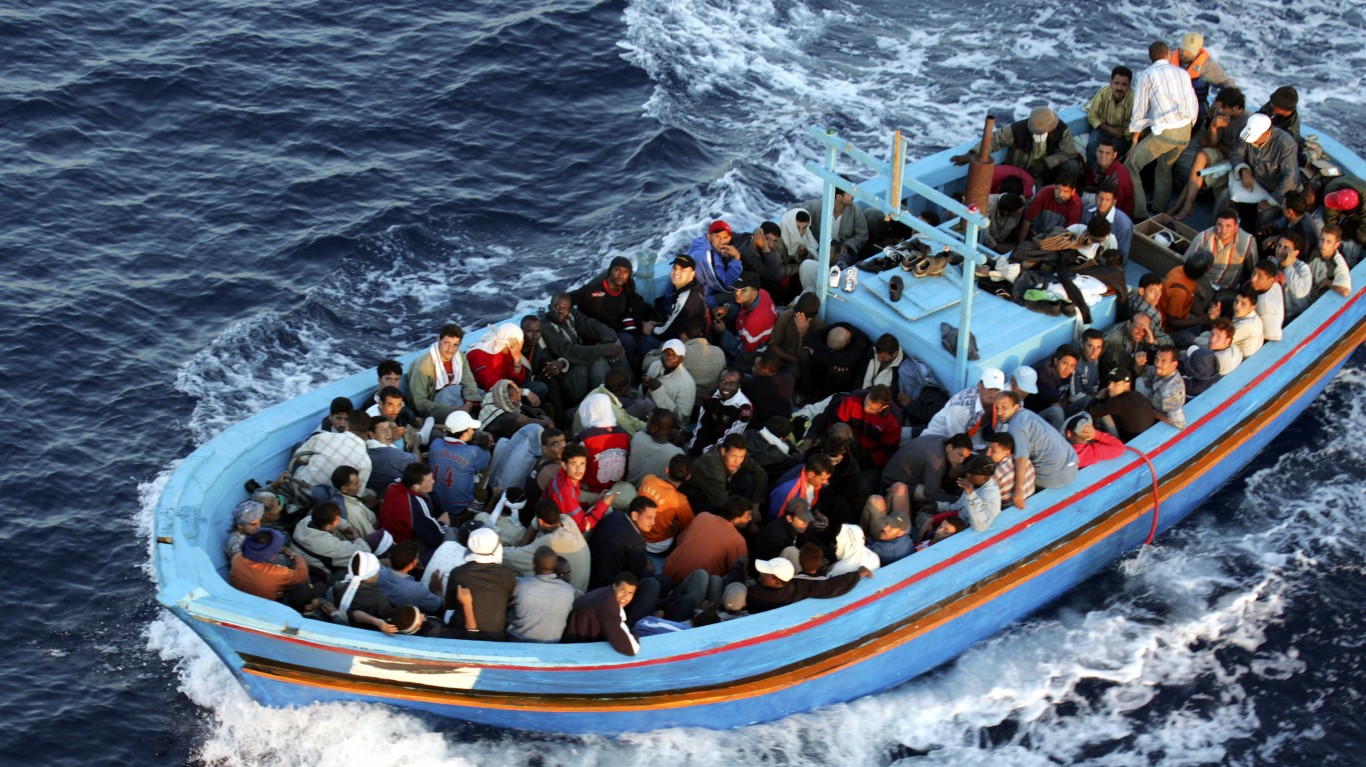
25. Italy
> Total refugees as of 2018: 189,172
> Total population in 2018: 60,431,283
> Share of total population: 0.3%
> Change in refugee population 2013-2018: +148.0%
> Largest source country: Nigeria
[in-text-ad]
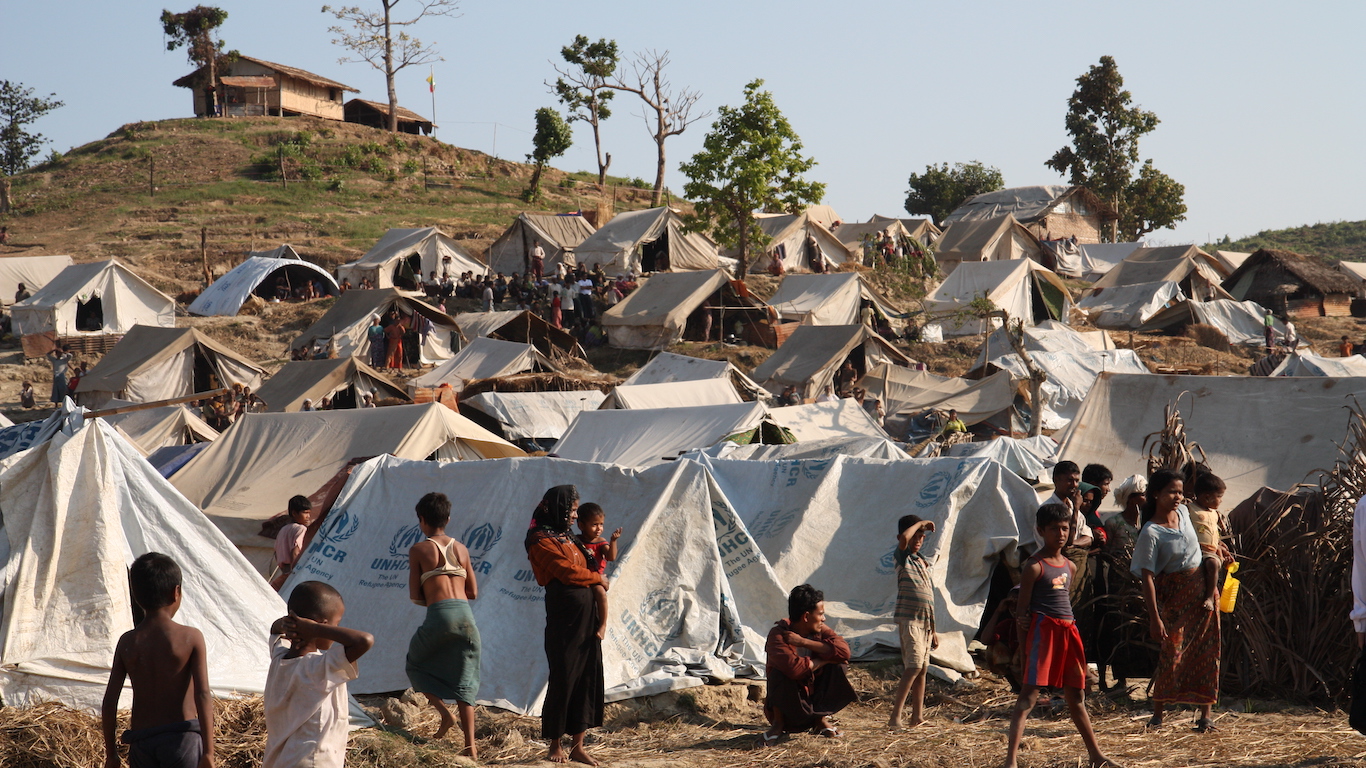
24. India
> Total refugees as of 2018: 195,867
> Total population in 2018: 1,352,617,328
> Share of total population: Less than 0.1%
> Change in refugee population 2013-2018: +4.0%
> Largest source country: China
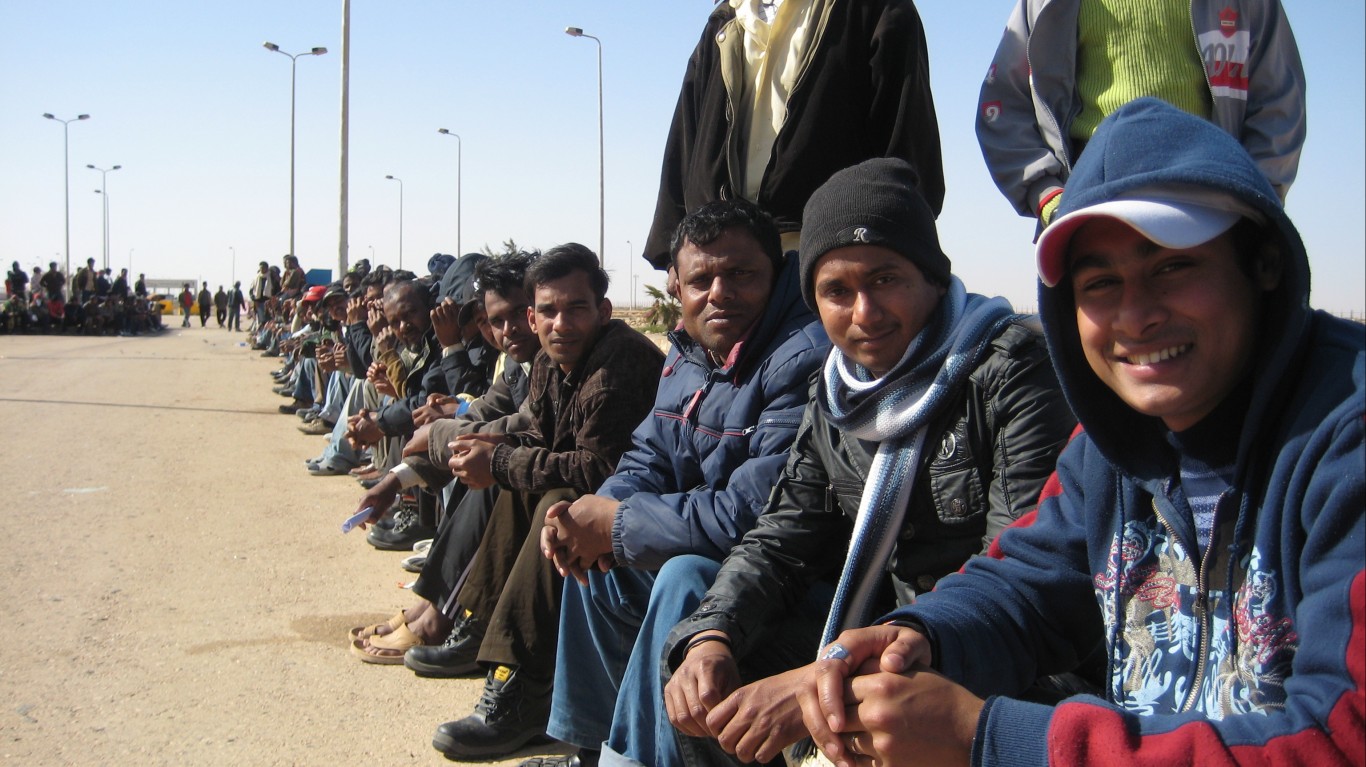
23. Egypt, Arab Rep.
> Total refugees as of 2018: 246,711
> Total population in 2018: 98,423,595
> Share of total population: 0.3%
> Change in refugee population 2013-2018: +7.2%
> Largest source country: Syrian Arab Rep.
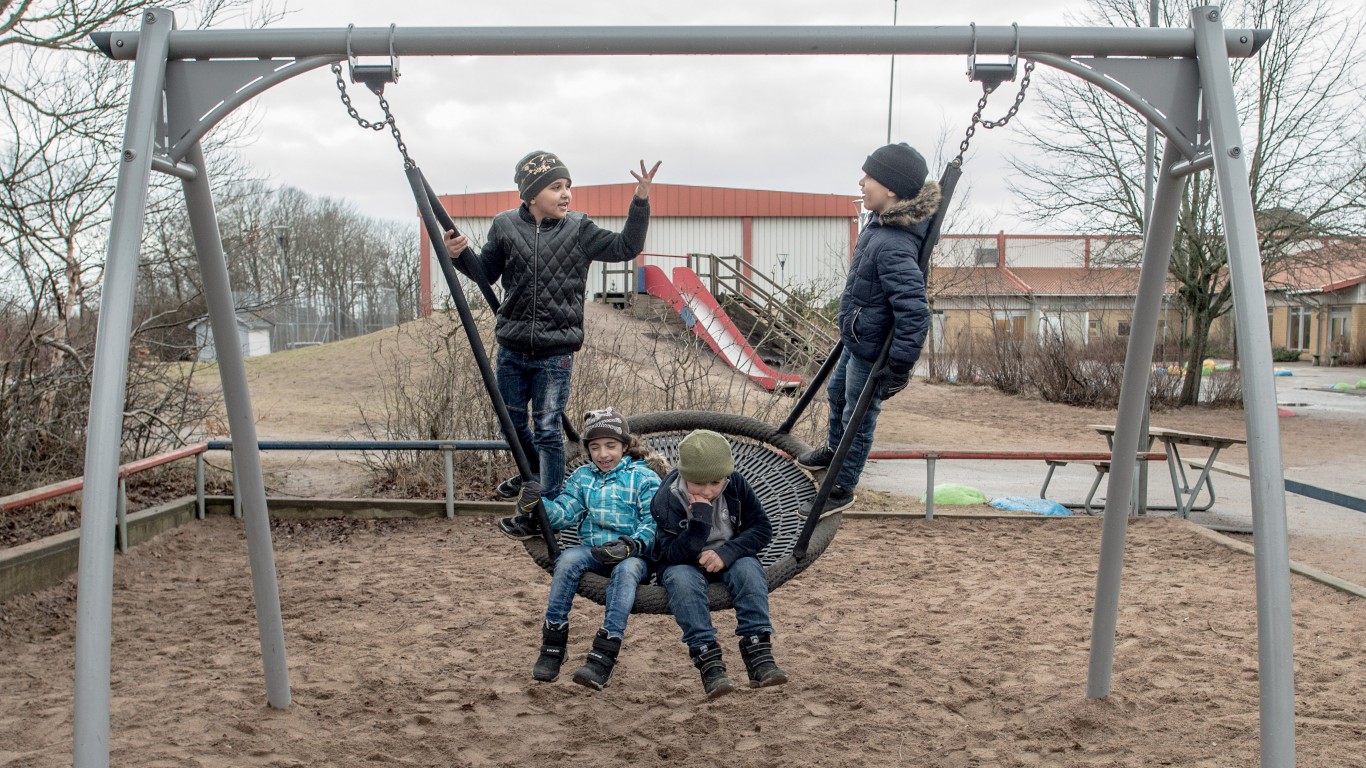
22. Sweden
> Total refugees as of 2018: 248,165
> Total population in 2018: 10,183,175
> Share of total population: 2.4%
> Change in refugee population 2013-2018: +117.4%
> Largest source country: Syrian Arab Rep.
[in-text-ad-2]
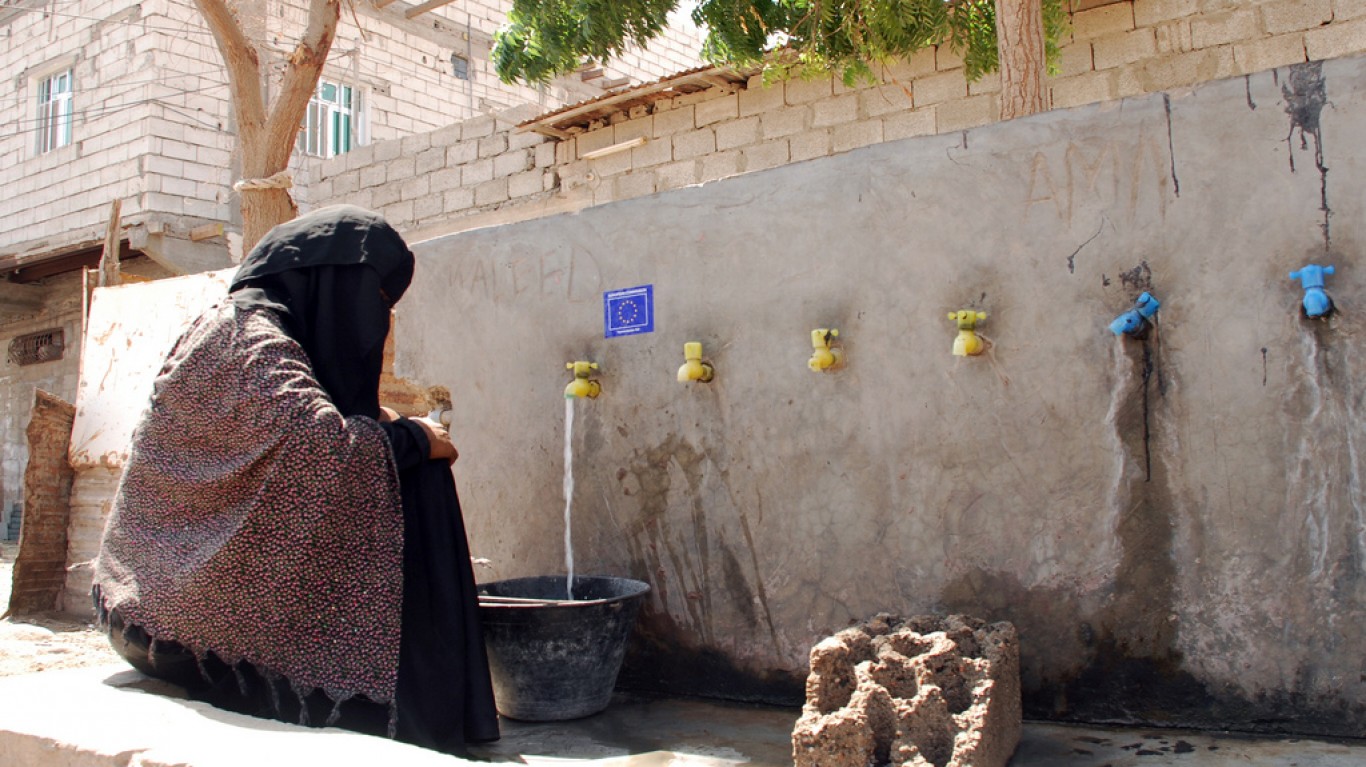
21. Yemen, Rep.
> Total refugees as of 2018: 264,349
> Total population in 2018: 28,498,687
> Share of total population: 0.9%
> Change in refugee population 2013-2018: +9.6%
> Largest source country: Somalia

20. Tanzania
> Total refugees as of 2018: 278,322
> Total population in 2018: 56,318,348
> Share of total population: 0.5%
> Change in refugee population 2013-2018: +172.6%
> Largest source country: Burundi
[in-text-ad]

19. Iraq
> Total refugees as of 2018: 283,013
> Total population in 2018: 38,433,600
> Share of total population: 0.7%
> Change in refugee population 2013-2018: +14.9%
> Largest source country: Syrian Arab Rep.

18. South Sudan
> Total refugees as of 2018: 291,833
> Total population in 2018: 10,975,920
> Share of total population: 2.7%
> Change in refugee population 2013-2018: +27.1%
> Largest source country: Sudan

17. United States
> Total refugees as of 2018: 313,182
> Total population in 2018: 327,167,434
> Share of total population: 0.1%
> Change in refugee population 2013-2018: +18.8%
> Largest source country: China
[in-text-ad-2]

16. China
> Total refugees as of 2018: 321,733
> Total population in 2018: 1,392,730,000
> Share of total population: Less than 0.1%
> Change in refugee population 2013-2018: +6.9%
> Largest source country: Viet Nam

15. France
> Total refugees as of 2018: 368,305
> Total population in 2018: 66,987,244
> Share of total population: 0.5%
> Change in refugee population 2013-2018: +58.4%
> Largest source country: Various/Unknown
[in-text-ad]
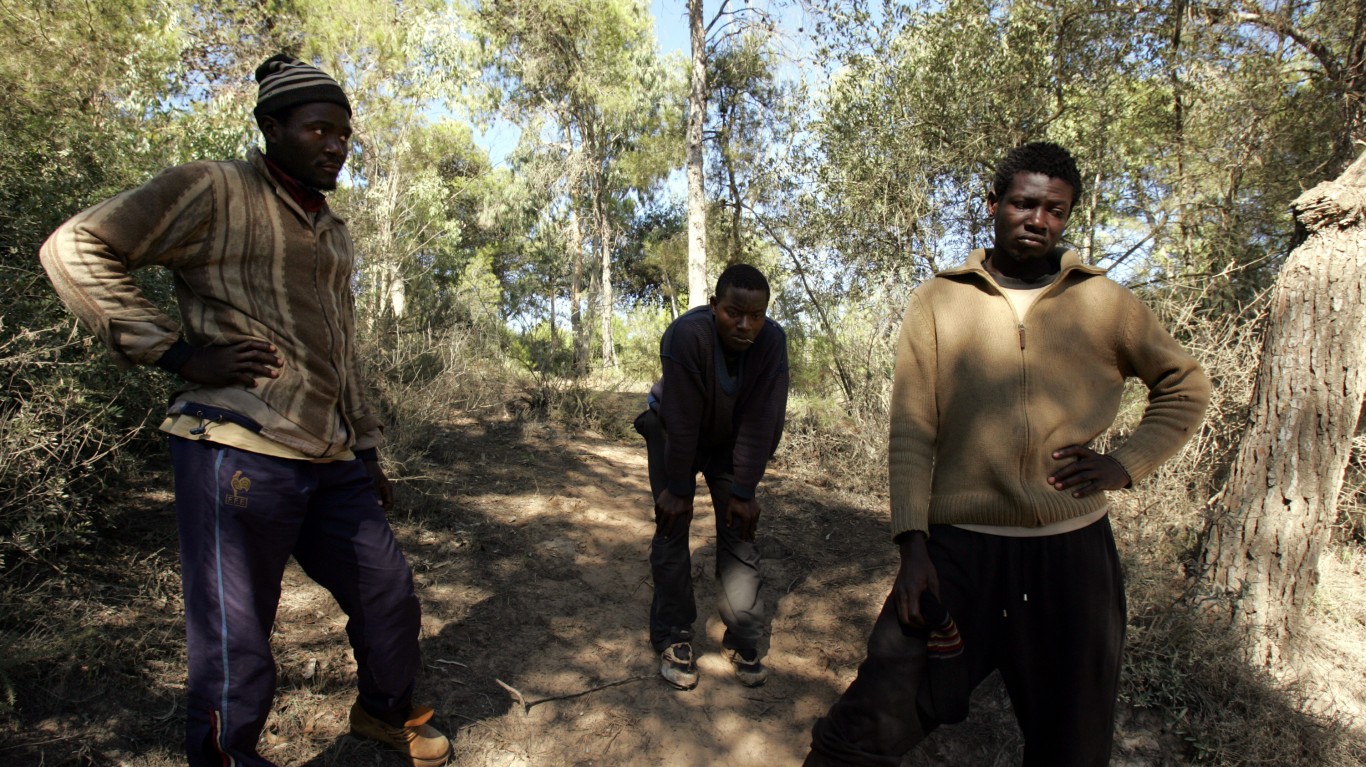
14. Cameroon
> Total refugees as of 2018: 380,307
> Total population in 2018: 25,216,237
> Share of total population: 1.5%
> Change in refugee population 2013-2018: +231.4%
> Largest source country: Central African Rep.

13. Kenya
> Total refugees as of 2018: 421,228
> Total population in 2018: 51,393,010
> Share of total population: 0.8%
> Change in refugee population 2013-2018: -21.3%
> Largest source country: Somalia
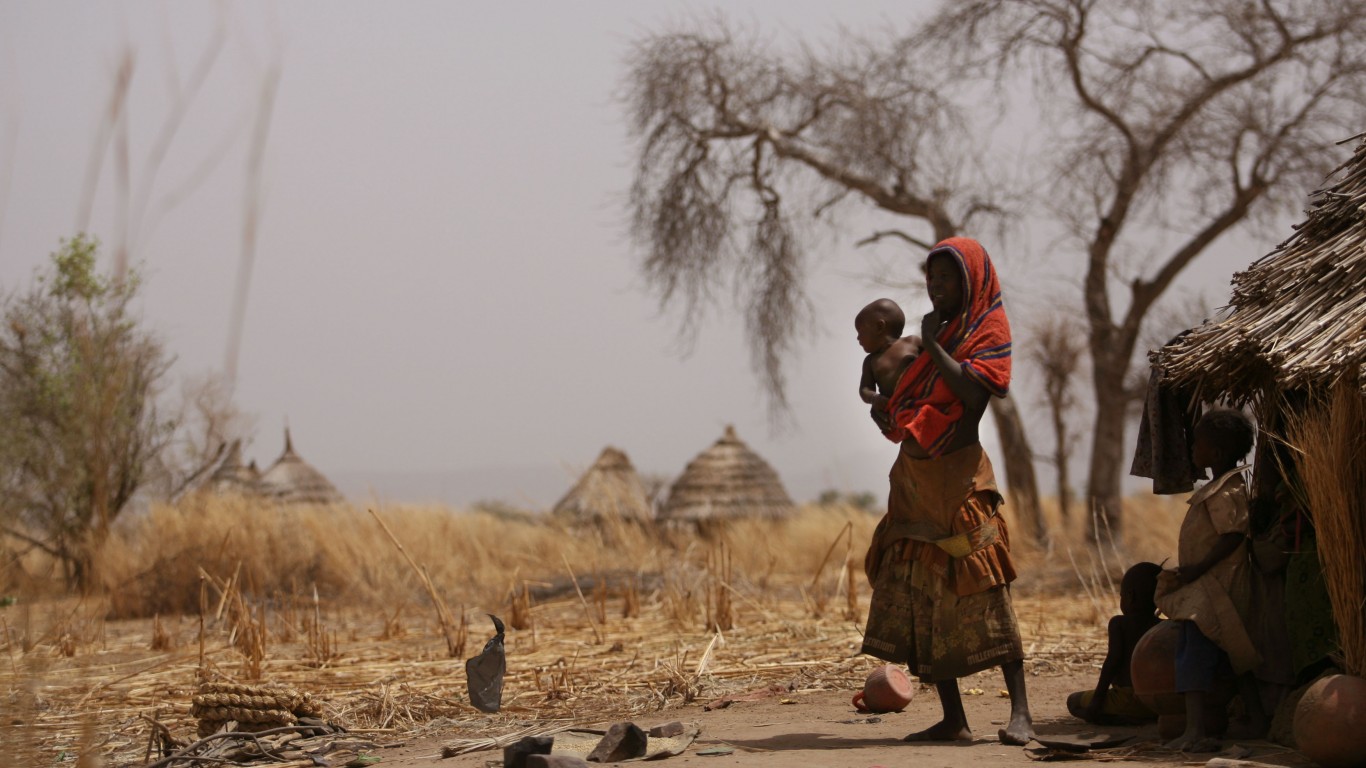
12. Chad
> Total refugees as of 2018: 451,198
> Total population in 2018: 15,477,751
> Share of total population: 2.9%
> Change in refugee population 2013-2018: +3.8%
> Largest source country: Sudan
[in-text-ad-2]

11. Congo, Dem. Rep.
> Total refugees as of 2018: 529,045
> Total population in 2018: 84,068,091
> Share of total population: 0.6%
> Change in refugee population 2013-2018: +366.7%
> Largest source country: Rwanda
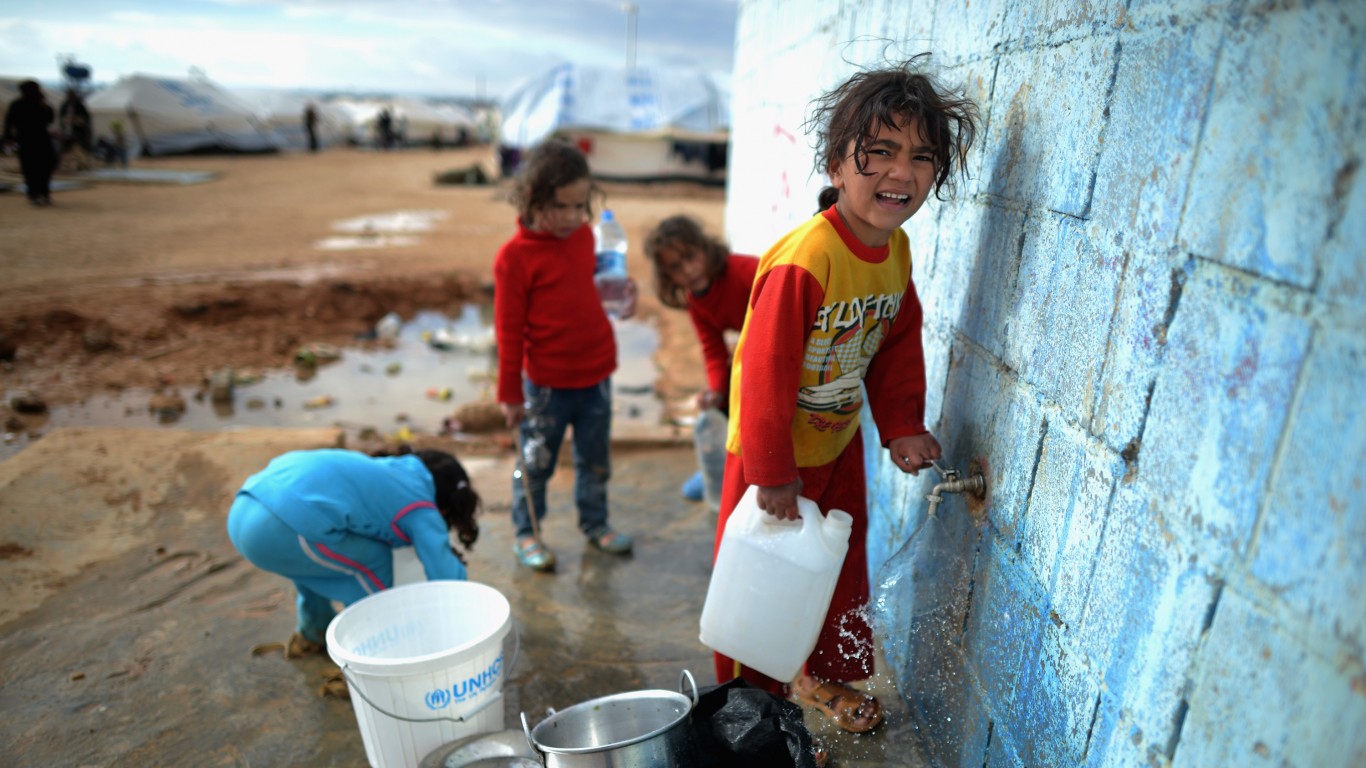
10. Jordan
> Total refugees as of 2018: 715,293
> Total population in 2018: 9,956,011
> Share of total population: 7.2%
> Change in refugee population 2013-2018: +11.4%
> Largest source country: Syrian Arab Rep.
[in-text-ad]

9. Ethiopia
> Total refugees as of 2018: 903,211
> Total population in 2018: 109,224,559
> Share of total population: 0.8%
> Change in refugee population 2013-2018: +108.1%
> Largest source country: South Sudan
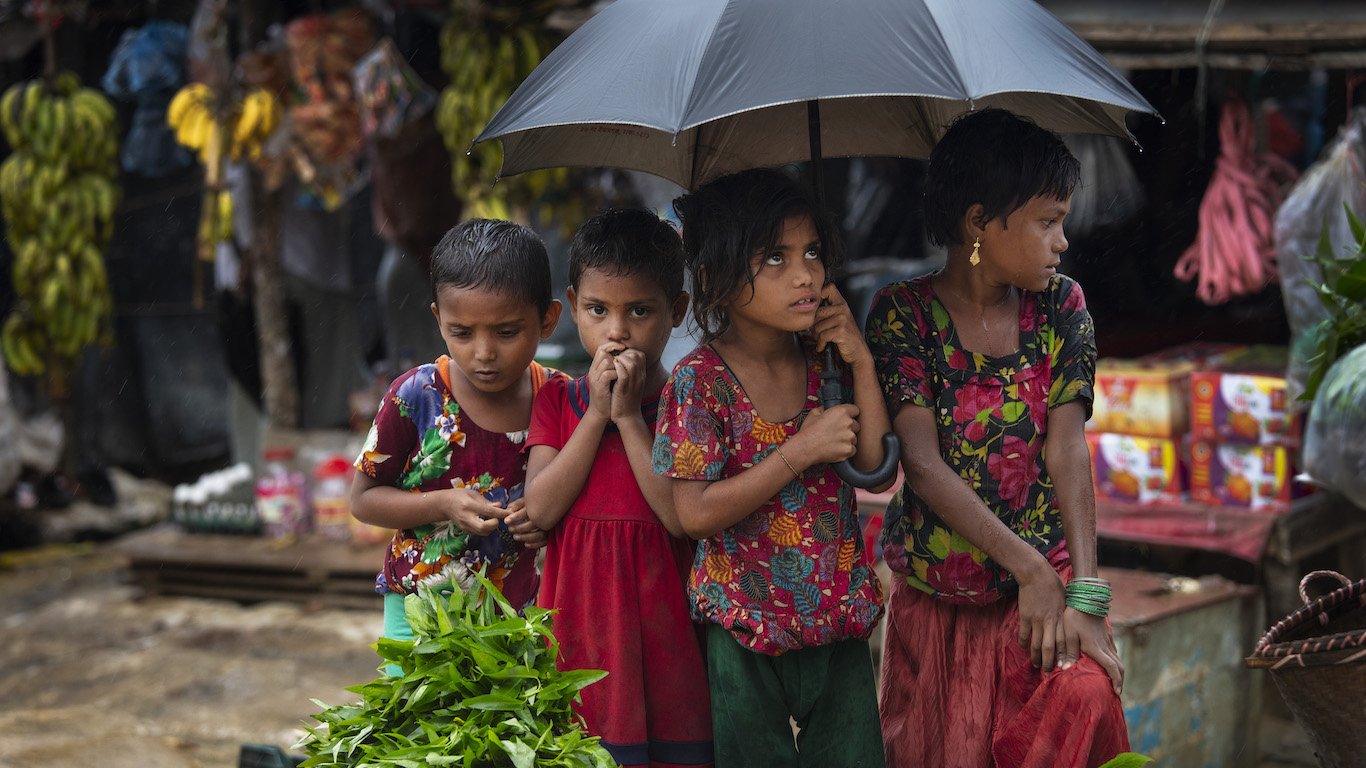
8. Bangladesh
> Total refugees as of 2018: 906,635
> Total population in 2018: 161,356,039
> Share of total population: 0.6%
> Change in refugee population 2013-2018: +292.2%
> Largest source country: Myanmar
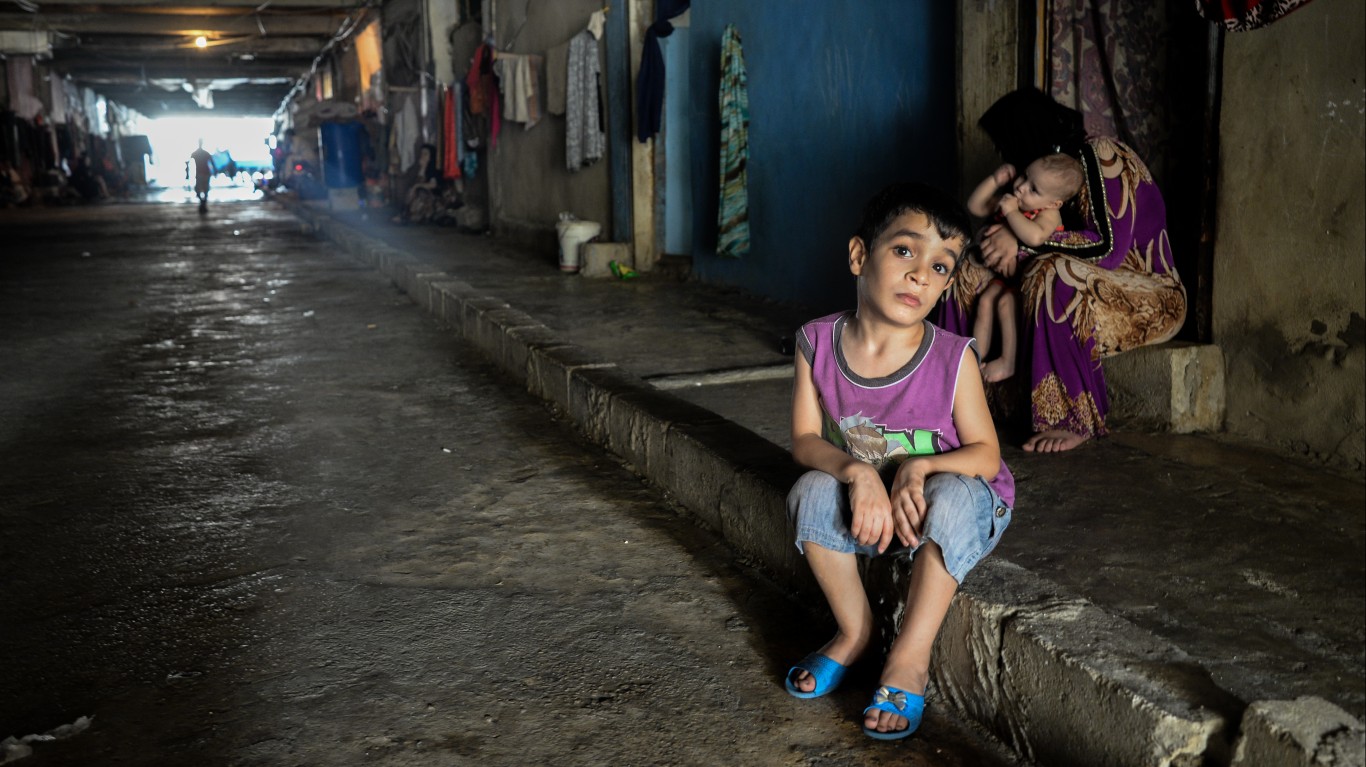
7. Lebanon
> Total refugees as of 2018: 949,653
> Total population in 2018: 6,848,925
> Share of total population: 13.9%
> Change in refugee population 2013-2018: +10.9%
> Largest source country: Syrian Arab Rep.
[in-text-ad-2]

6. Iran, Islamic Rep.
> Total refugees as of 2018: 979,435
> Total population in 2018: 81,800,269
> Share of total population: 1.2%
> Change in refugee population 2013-2018: +14.2%
> Largest source country: Afghanistan
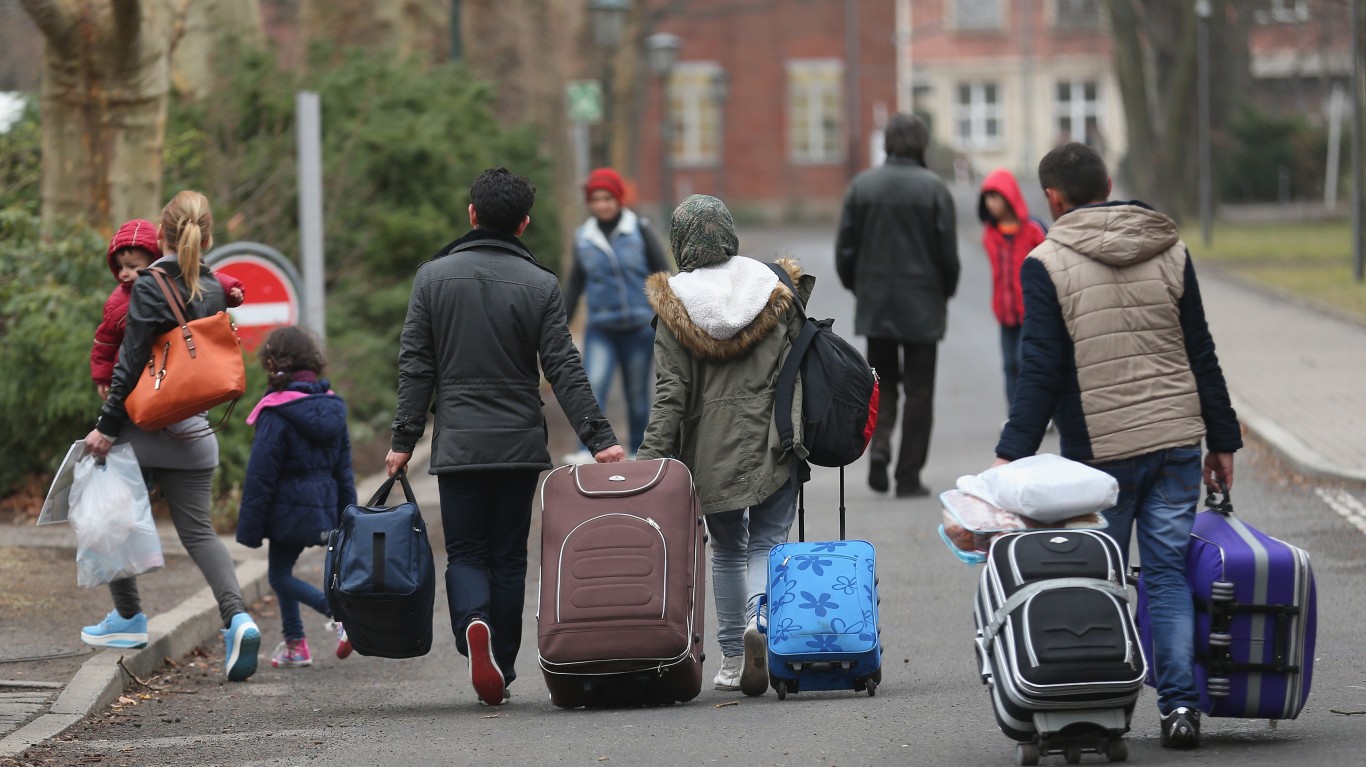
5. Germany
> Total refugees as of 2018: 1,063,765
> Total population in 2018: 82,927,922
> Share of total population: 1.3%
> Change in refugee population 2013-2018: +467.1%
> Largest source country: Syrian Arab Rep.
[in-text-ad]
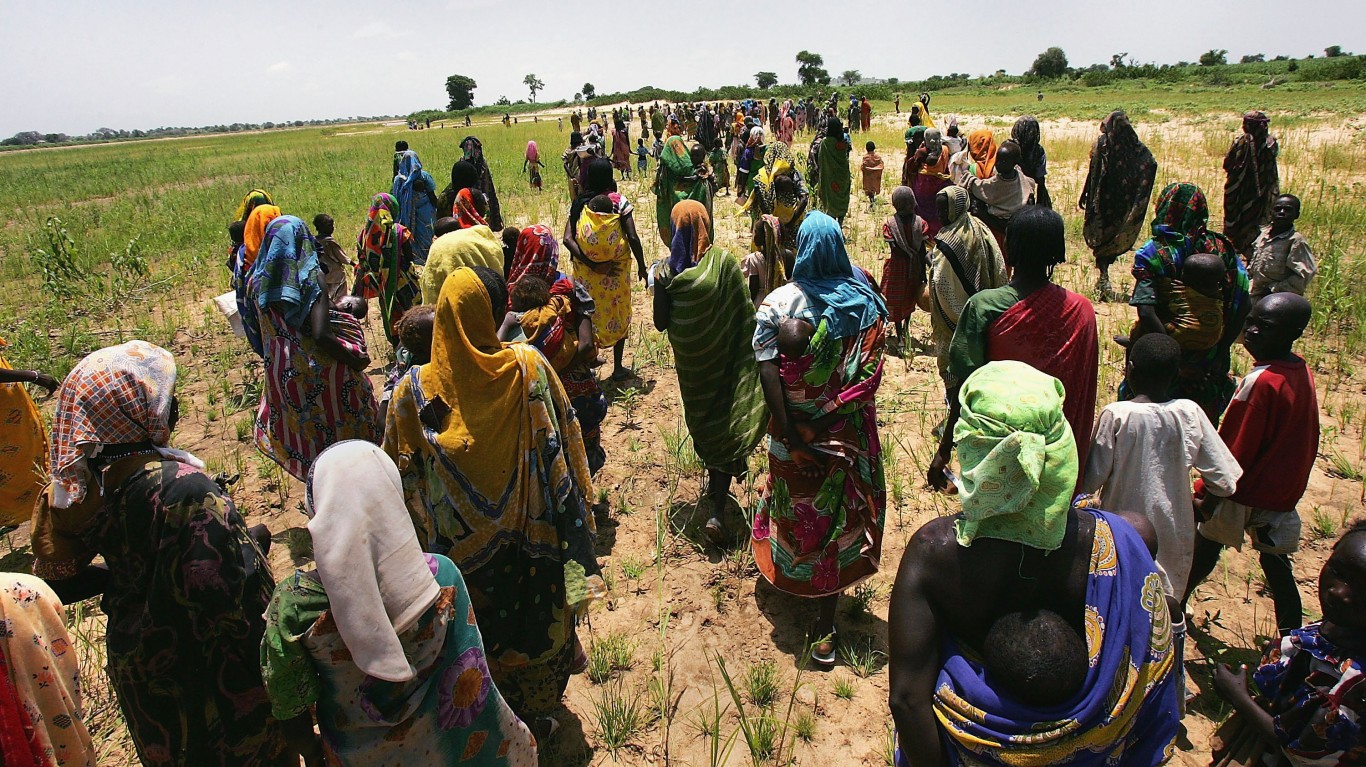
4. Sudan
> Total refugees as of 2018: 1,078,275
> Total population in 2018: 41,801,533
> Share of total population: 2.6%
> Change in refugee population 2013-2018: +574.5%
> Largest source country: South Sudan
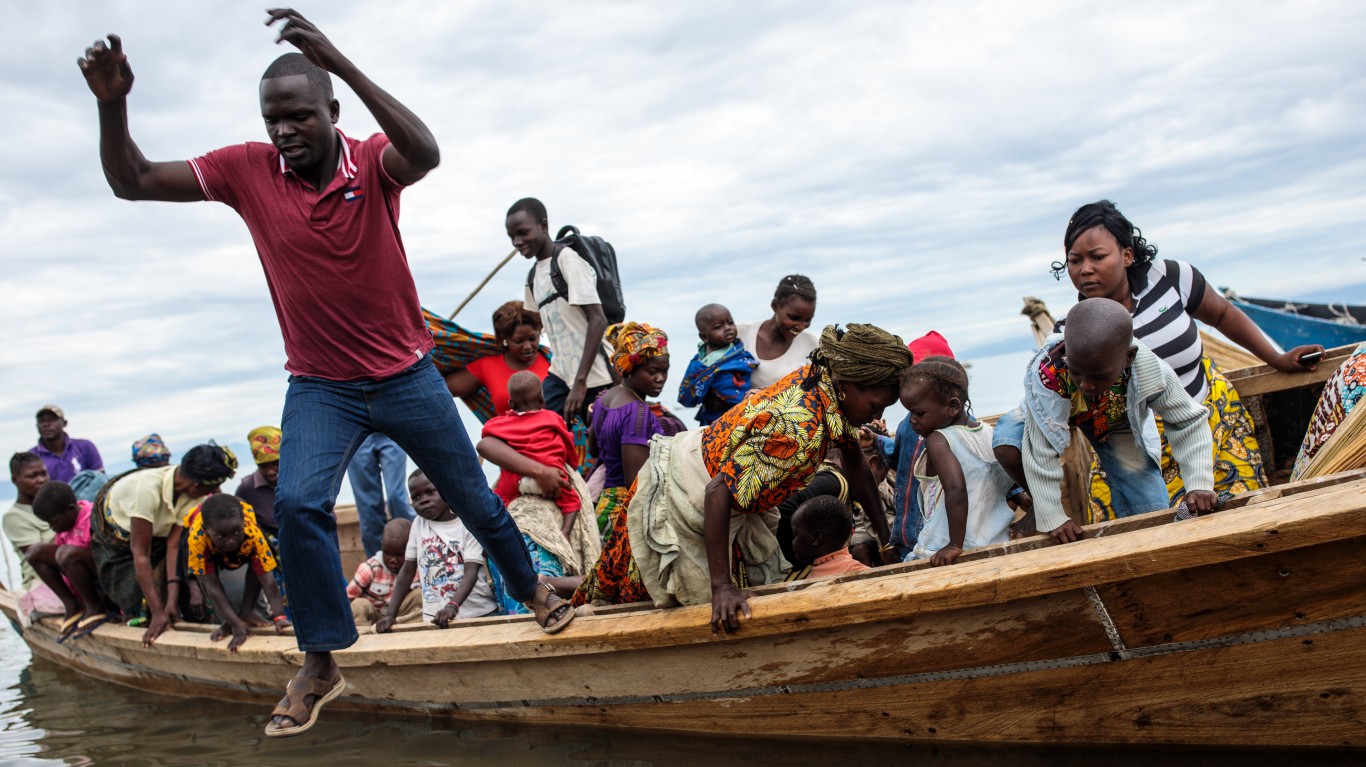
3. Uganda
> Total refugees as of 2018: 1,165,636
> Total population in 2018: 42,723,139
> Share of total population: 2.7%
> Change in refugee population 2013-2018: +428.5%
> Largest source country: South Sudan
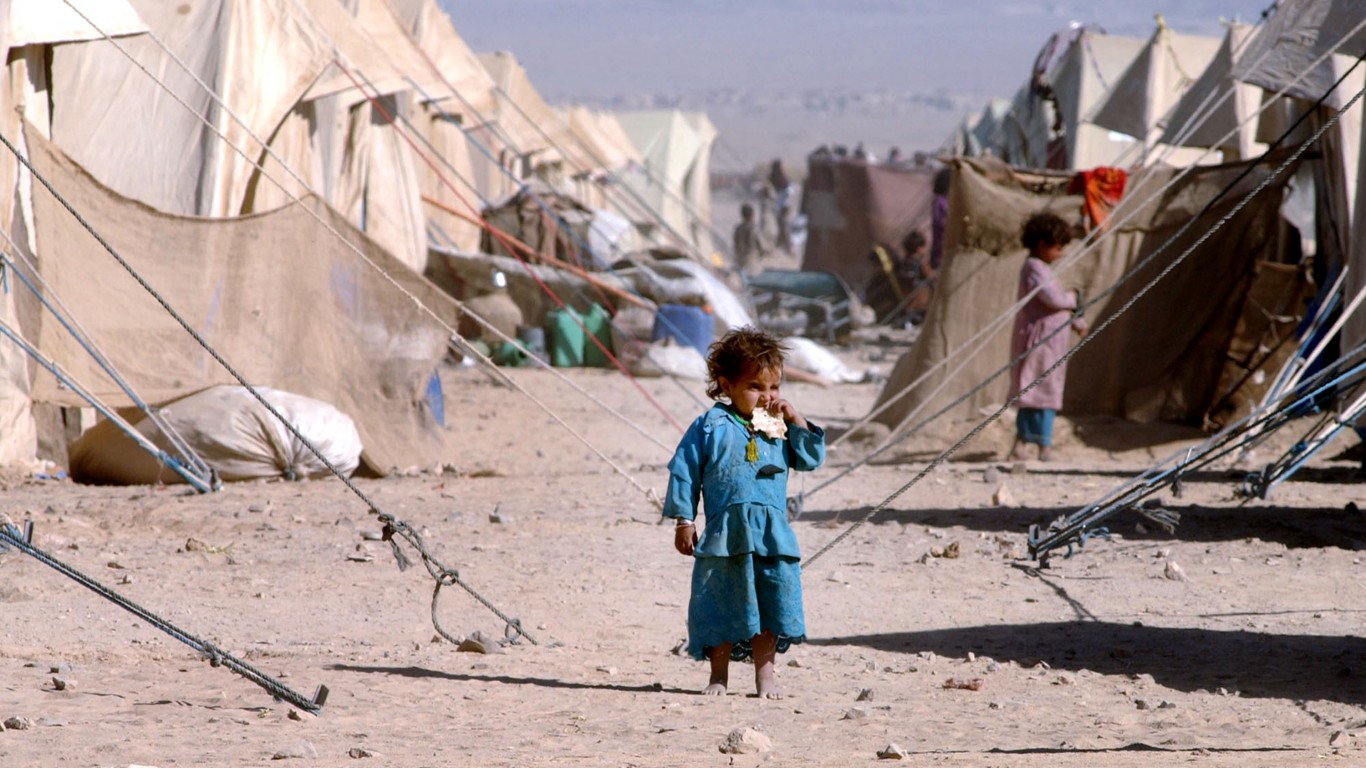
2. Pakistan
> Total refugees as of 2018: 1,404,008
> Total population in 2018: 212,215,030
> Share of total population: 0.7%
> Change in refugee population 2013-2018: -13.1%
> Largest source country: Afghanistan
[in-text-ad-2]
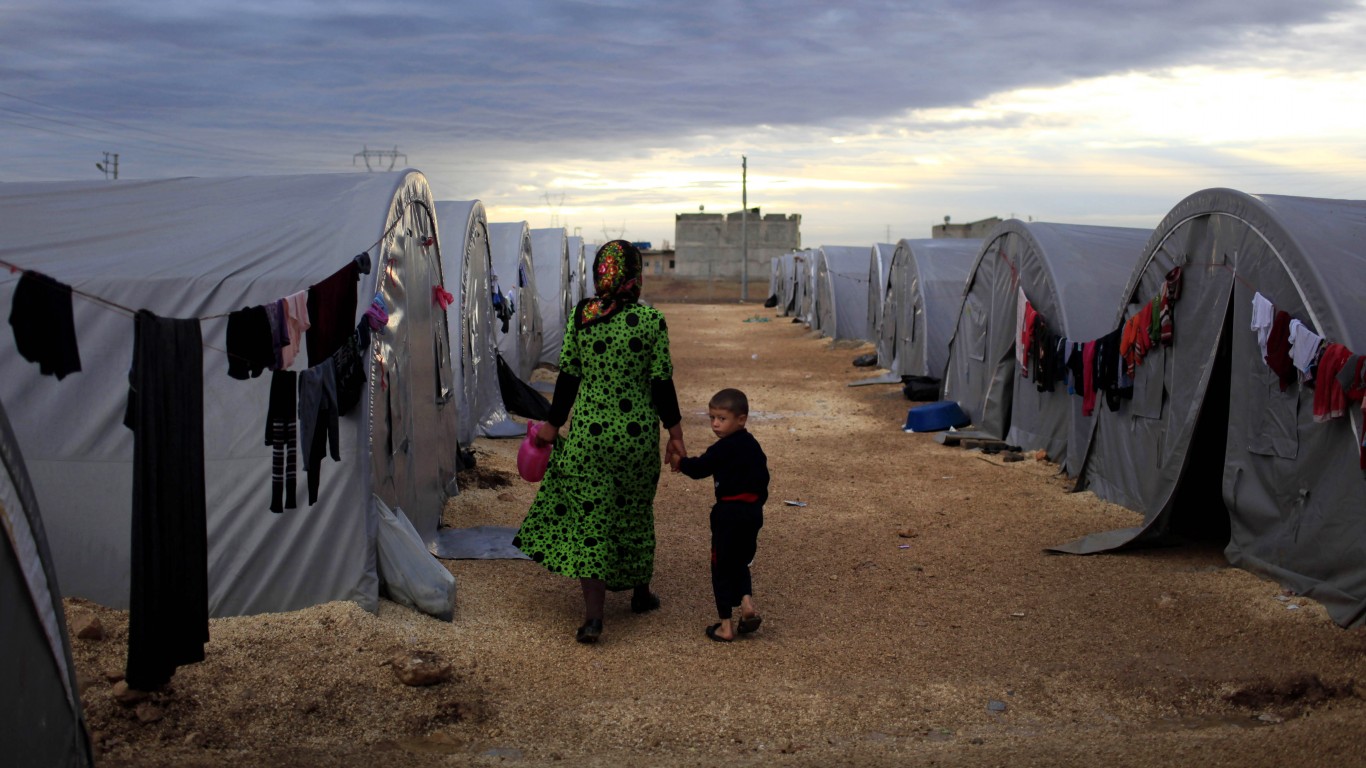
1. Turkey
> Total refugees as of 2018: 3,681,658
> Total population in 2018: 82,319,724
> Share of total population: 4.5%
> Change in refugee population 2013-2018: +503.6%
> Largest source country: Syrian Arab Rep.
Retirement planning doesn’t have to feel overwhelming. The key is finding expert guidance—and SmartAsset’s simple quiz makes it easier than ever for you to connect with a vetted financial advisor.
Here’s how it works:
Why wait? Start building the retirement you’ve always dreamed of. Click here to get started today!
Thank you for reading! Have some feedback for us?
Contact the 24/7 Wall St. editorial team.